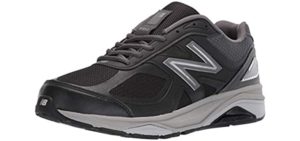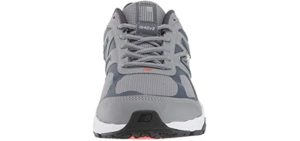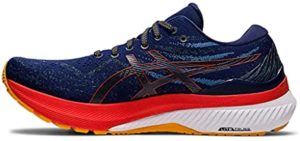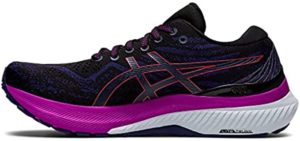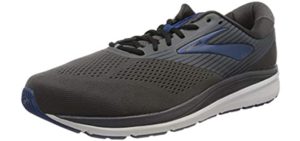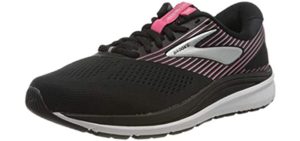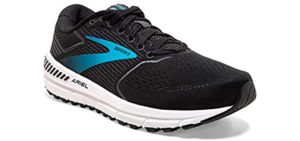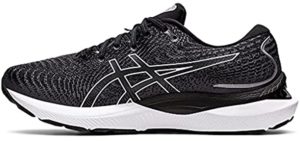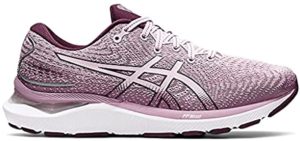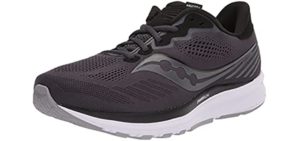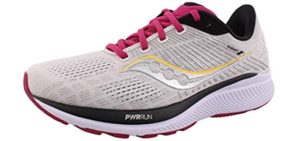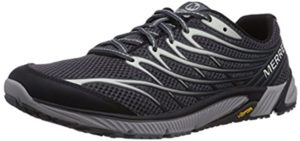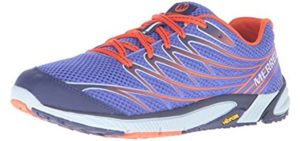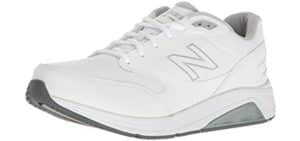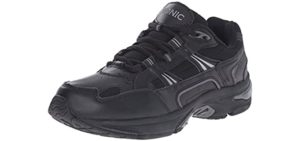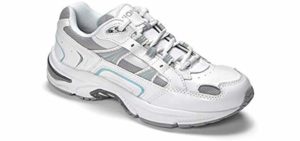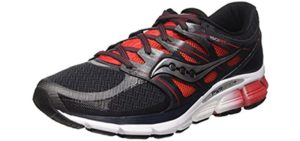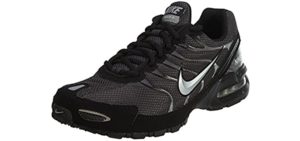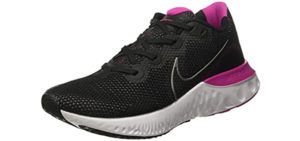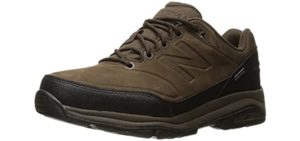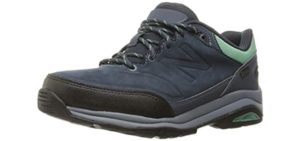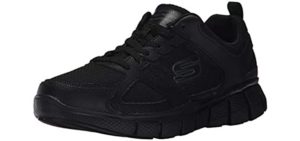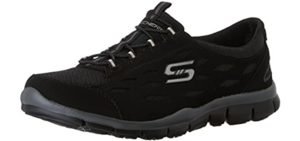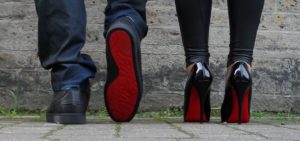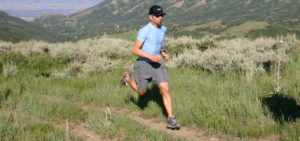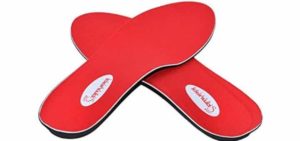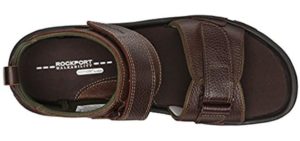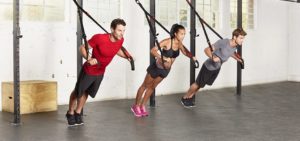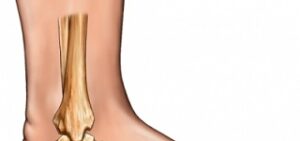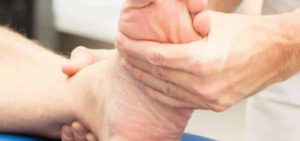Walking and Running flat feet for extended periods can be a challenge.
If you have a flatter foot or low arch, you will need shoes that provide good walking or running shoes for flat feet for support and shock absorbency to prevent foot conditions such as Plantar Fasciitis, Heel Spurs, Shin Splints, Knee Pain, and other injuries.
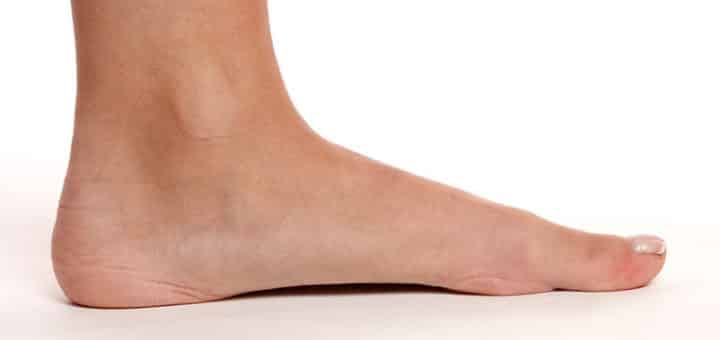
What are Flat Feet?
A flat foot is a condition whereby a person has the arches of his feet sitting entirely on the flat ground. The term refers to a medical condition called pes planus and fallen arches;
It appears to manifest itself among people that the curves of the inner central part of their feet have collapsed.
On many occasions, flat-footedness is caused by the person’s body being unable to develop the arches naturally or when the muscles of the feet are too weak to maintain them.
Individuals with flat feet find it very challenging to put on regular shoes.
When they put on such shoes, the lower arch pains a lot and may lead to other foot & skeletal leg complications.
Running and Walking with Flat Feet
People with lower or flat feet from collapsed arches can find themselves running flat-footed, their feet slapping down with each strike from the ankle rather than striking with the midfoot and rolling smoothly through a step.
Some people with flat feet will strike the ground heel first, and then the foot will flatten out. Others will land on the midsole with no heel strike, leading to painful shin splints.
Shoes that are too stiff and have stiff, flat soles often aggravate flat-footed runners because their feet cannot roll through as nature intended them to do. Flexible shoes that bend at the ball of the foot will ensure more natural movement.
How Flat Feet Affect the Way you Run and Walk
A flat foot or fallen arch is when the arch of your foot is either completely flat or extremely low to the ground.
People with flat feet tend to roll over to the inner side when they stand, walk, or run, and their feet will point outwards as a result.
Overpronation, which is the excessive inner rolling of the feet when you walk or run, is one of the primary defects caused by having flat feet or low arches. For this reason, a motion control or stabilizing shoe is usually the best option for someone who over-pronates and can prevent the feet from rolling inward excessively.
Most people with fallen arches or flat feet do not experience any pain or discomfort. However, some people may experience foot pain when their ligaments and muscles become strained, and their leg joints are affected, which also results in pain.
Because of overpronation, mainly caused by flat feet, the ankles turn inwards when you walk, causing extra stress and pain in the feet, ankles, and knees.
Simple devices such as orthotic insoles for flat feet and motion control shoes with excellent cushioning and arch support can help prevent the painful and uncomfortable conditions caused by flat feet and provide you with ample support and monitoring of overpronation.
Some Causes of Flat feet or Fallen Arches
Flat feet can be a genetic condition that runs in the family, although many other aspects can lead to flat feet;
- Weakening Arches: it may be there when no weight is placed on it when you are sitting, but as soon as you stand, your foot flattens, and the arch falls onto the ground completely.
- Foot Injuries: Can cause the foot or ligaments to weaken or damage, causing the arch to fall and the foot to become flat
- Medical Conditions: Such as Arthritis can also lead to a flat foot as well as many other complications.
- Tibialis Posterior: A ruptured tendon in the foot can lead to a collapsed arch and flat foot.
- Pregnancy: The hormone relaxin used to relax the joints in the body to accommodate childbirth can also affect the feet, causing the joints and tendons to relax and the foot to become flatter than normal; this is, of course, more severe with added weight gain.
- Excessive Weight: This puts pressure on the feet with added weight that can cause the foot to flatten and widen.
- Muscle Nervous System Diseases, Such as cerebral palsy, muscular dystrophy, or Spina Bifida, can also cause the foot to become flat.
- Diabetes: This condition can affect your feet and cause flat feet.
- Genetics: Congenital disabilities or abnormalities may result in deformation of the foot or a more flat arch.
- Tendons: Can become stretched or torn, particularly with excessive repetitive activities, causing the arch to collapse and the foot to become flat.
- Broken Bones: Or dislocated bones may result in a low or fallen arch, causing flat feet.
- Nerve Conditions: Neuropathy may cause flat feet or a fallen arch.
- Aging: With age, wear and tear sets in after many years of using your feet to walk, run, and jump, eventually taking its toll and resulting in one of the consequences: flat feet.
Foot Conditions Associated with Flat Feet
- Plantar Fasciitis – When you feel pain or tenderness at the bottom of your foot or the heel, you may have Plantar Fasciitis. Plantar fasciitis occurs when the soft band of tissue called the Plantar Fascia, which runs from your heel bone to the ball of your feet, becomes inflamed and stiff because of excessive strain on this tissue and small tearing in the tissue.
- The splitting occurs because of extreme stress and impact from overworking that off your foot and wearing unsupportive footwear.
- Doing regular stretching exercises and wearing hiking shoes for flat feet with a supportive and cushioned contoured footbed will prevent Plantar Fasciitis or reduce the painful symptoms should you already suffer from this condition.
- Ingrown Toenails – When you wear shoes that are too short or tight, there is pressure on your toes, causing the toenails to grow sideways into the soft tissue rather than forward. Ingrown toenails can be painful and worsen as you walk because of the extra pressure on the toes. Could you ensure that your walking shoes have ample toe wiggle room and a comfortable and flexible fit? Also, could you ensure you choose shoes in the right size?
- Bunions – Bunions develop when the bones in the joint of the outer side of your big or little toe become misaligned and swell. People with flat feet, low arches, or arthritis are more prone to Bunions. Wearing a shoe with a wider and softer toe box will reduce pressure on the toes, preventing Bunions or eliminating the pain caused by Bunions.
- Achilles Tendinitis – The Achilles tendon connects your heel to your calf muscle when this tendon becomes irritated from excessive walking. You can experience pain in the back of your heel and lower calf. The repeated flexing of the foot when you walk up and down steep hills or on uneven terrain can cause Achilles Tendinitis—keeping to even and steady ground will reduce your risks of developing this condition.
- Lumbar Strain – Lumbar strain is pain or aching in your mid or lower back caused when the ligaments around your spine become overworked. Keeping your back muscles strong by performing regular back exercises and avoiding heavy lifting objects with your back or bending over at your waist can prevent Lumbar strain.
- Neuroma – Pain in the ball of your foot or between your toes is usually because of a neuroma. A neuroma is the thickening of the nerve near the base of the toes that can cause tingling, numbness, or pain in the surrounding area. Wearing shoes that fit well and provide appropriate support will significantly reduce your chances of developing Neuroma.
- Shin Splints – Your skin bears up to six times your weight when you walk or exercise. Therefore, repetitive pounding on these muscles and the surrounding tissues can create inflammation, leading to stiffness and soreness in the shin area. Always give Shin Splints time to heal by cutting on exercising for a short period and strengthening the muscles in your front lower leg to prevent shin splints.
Features of Good Walking & Running Shoe for Flat Feet
- Support – Motion Control and Stability features to control over-pronation.
- Cushioning – Cushioning for comfort and shock absorbency.
- Outsole – High traction and durable rubber outsole.
- Uppers – Breathable, flexible upper construction with a secure closure.
- Fit – Lightweight design. Wider width availability.
Reviews: Best Running and Walking Shoes for Flat Feet
1
Motion Control Flat Feet Running Shoe
- Comfortable and breathable synthetic leather uppers with mesh inserts.
- A durable high-traction rubber outsole.
- The motion control technology aids in preventing overpronation.
- A Rollbar support system is an excellent feature for flat feet.
2
Flat Feet Corrective Running Shoe
- Seamless and breathable uppers for optimal support and stability without irritation.
- A re-engineered heel clutching system for a secure and comfortable fit.
- A ComforDry sock liner that provides plush cushioning as well as moisture-wicking capabilities for a cool and dry run.
- The Gel cushioning system provides the best in shock absorption and support and, along with the Impact Guidance System, helps to enhance the foot’s natural gait cycle.
- A durable and long-lasting outsole offers good grip and traction.
3
Flat Feet & Overpronation Running Shoe
- Runner’s World recently gave this latest variant as the Greatest Update of the year.
- This shoe uses its trademark PDRB triple-density medial post, which will be its primary motion control technology that managed to get the best athletic shoe for overpronators, so it remains to be the top motion control shoe in the marketplace.
- This shoe now also offers irregular top overlays that keep the arch nicely supported.
- To further prevent overpronation, Brooks additionally added a higher heel and a caterpillar heel pad which corrects better to the runner’s foot landings.
4
Wide Width & Flat Feet Running Shoe
- Comfortable and breathable mesh uppers.
- A sock liner that wicks away moisture and keeps the feet cool, fresh, and dry.
- BIOMOGO DNA Midsole provides stability and cushioned comfort.
- A Diagonal Rollbar delivers maximum control for the most natural motion and movement.
- A segmented crash pad gives you smoother heel-to-toe transitioning while the Omega Flex grooves provide forefoot fluidity.
- An abrasion-resistant HPR Plus rubber outsole provides durability in all the high wear areas.
5
Gel Padding Running Shoe
- An Impact Guidance System to enhance the foot’s natural gait efficiency.
- Rearfoot and Forefoot Gel adding, to attenuate shock and allow multiple movement lanes.
- The AHAR Outsole is highly abrasion-resistant.
- Lightweight and breathable upper construction.
6
Running Shoe for Flat Feet
- Lightweight construction with breathable mesh and synthetic overlays.
- Dynamic and secure fit for stability and motion control.
- EVERUN top sole that provides continuous cushioned comfort.
- A TRiFlex outsole from durable rubber for flexibility and protection.
7
Flat Feet Trail Running Shoes
- TPU and breathable mesh uppers.
- An EVA midsole for cushioned comfort and support.
- An Integrated EVA footbed.
- Slight heel and 2mm Lug rubber outsole for excellent grip on slippery surfaces.
If you plan to WALK as an exercise:
Get WALKING SHOES for Flat Feet and NOT Running Shoes for Flat Feet !
Here’s Why:
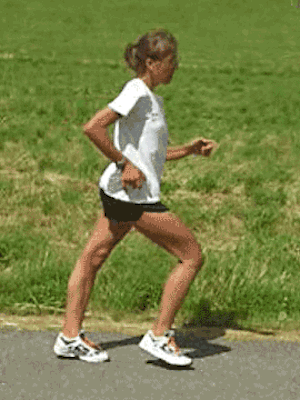 When You WALK you strike first with your heel and then go through the gait cycle through your mid-foot and the front ball of foot and then propel walking forward.
When You WALK you strike first with your heel and then go through the gait cycle through your mid-foot and the front ball of foot and then propel walking forward.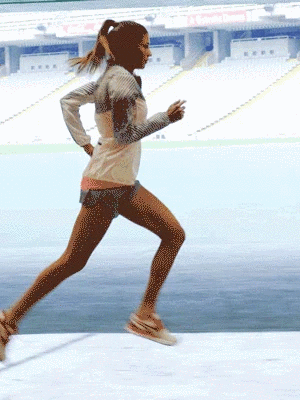 When You RUN (properly) you strike first with your mid-foot or ball-of-foot and then go through the gait cycle flat on your foot and then propel running forward.
When You RUN (properly) you strike first with your mid-foot or ball-of-foot and then go through the gait cycle flat on your foot and then propel running forward.All Major Athletic Shoe Brands are aware of the foot-strike difference.
They manufacture their shoes accordingly:
Walking Shoes: Cushioned Heel & Flexible Mid-Foot.
Running Shoes: Cushioned Mid-Foot & Elevated Flexible Heel.
To Conclude:
If you plan to Walk – Get Walking Shoes and NOT Running Shoes!
Because Getting Running Shoes for a Walking Activity may damage your Heels, Feet, Knees, and Hips.
8
Motion Control Flat Feet Walking Shoe
- Comfortable leather uppers in a range of neutral colors.
- A comfortable tongue and foam collar for a more supportive fit.
- The compression-molded EVA insole ensures excellent cushioning and shock absorption.
- A 13mm heel-to-toe drop, which is ideal for a walking shoe for flat feet.
- The long-lasting rubber outsole ensures a good grip on different surfaces.
9
Walking Shoes for Low Arches
- The removable orthotic footbed and Tri-Plantar Motion Control Technique ensures exceptional comfort and support.
- It uses a very high-quality arch support system.
- It is prevalent for those who suffer from pain due to flat feet, heel pain, calluses, the ball of foot pain, and bunions.
- It has a classy look with a mesh upper sole and a midsole shock absorber.
- Human-made sole – specifically designed to keep you always on the move.
- It comes with a built-in ortho heel footbed that is very useful for controlling foot gait.
10
Walking Shoes for Flat Arches
- The Echelon features PWRRN cushioning for shock absorbency and comfort.
- The upper is lightweight and breathable.
- There is a flexible sole.
- More color options are likewise available.
11
Stability Walking Shoe for Plantar Fasciitis
- The ideal shoe for flat feet that tend to Overpronate and for heel pain.
- The upper consists of a flexible mesh with a lightweight fit.
- There is a Visible Air Max cushioning unit in the heel for heel pain and stability features in the heel and forefoot.
- The Phylon midsole offers exceptional cushioning and shock absorbency, and there is a high traction durable rubber outsole.
- You can also choose between a few color selections in this shoe model.
12
Stability Trail Walking Shoe
- There is a lightweight leather upper that is also waterproof, making this the ideal outdoor walking shoe.
- The ROLLBAR technology improves motion and prevents Overpronation in flat feet.
- Furthermore, the foam midsole and cushioned footbed provide comfort and shock absorbency, and the durable rubber outsole offers the best grip on all terrains.
- You can likewise get this shoe model in a few neutral color options.
- What you can count on for flat feet are the excellent rearfoot and forefoot stability features.
13
Walking Shoe for Flat Feet
- The uppers comprise breathable mesh with synthetic overlays and a moisture-wicking lining.
- For support and cushioning, there is molded duel-lite base material, with a layer of gel-infused high rebound memory foam, topped with a layer of moisture-wicking fabric.
- The design of the shoe will easily contour to the most foot shape for all-day comfort.
- The durable rubber outsole finished the shoe off with excellent traction and slip resistance capabilities.
Obesity and Flat Feet
One of the main reasons that the arch of your foot collapses causing flat feet is excessive weight. The extreme weight causes strain on the arches resulting in the tendons and muscles becoming strained and stretched out, eventually causing the arch to collapse and the foot to flatten. Because of the excess weight in an overweight person, the feet are not only flat but will also tend to be wider and longer which means that you will need a larger-sized shoe that also has a wider width.
Shock absorption is insufficient with a flat foot, and strain on the legs, ankles, knees, and hips are increased. Therefore footwear or orthotic insoles that provide adequate arch support and shock absorption are so important. Losing excess weight will be a great advantage as this will reduce the strain on your already strained flat feet and may also lessen the severity of the condition. Obesity is just as much as a risk to your feet and lower limbs as it is to the rest of your body, and you may eventually find it difficult or impossible to walk.
Essential Requirements and Equipment for Flat Feet.
Good arch support to ensure a more normal foot curve is key. Your arches absorb shock and hold your entire body’s weight when your feet touch the surface. When your arch is flattened extra pressure is exerted on your feet that can lead to tendon damage. Therefore good arch support in a shoe is always required.
A shoe with a raised insole provides added support to the middle foot, which is very beneficial to flat feet. Various medical orthotic devices can be used to raise the middle foot and to provide artificial cushioning and curvature to a flat foot.
Index Table: Top Rated Walking and Running Shoes for Flat Feet
| No. | Shoe | Men ♂ | Women ♀ | Features | Brand | Score |
|---|---|---|---|---|---|---|
| 1 | New Balance® - Motion Control Flat Feet Running Shoe | M1540v3 | W1540v3 |
| New Balance | 98.3 |
| 2 | Asics® - Flat Feet Corrective Running Shoe | Gel Kayano 29 | Gel Kayano 29 |
| Asics | 97 |
| 3 | Brooks® - Flat Feet & Overpronation Running Shoe | Addiction 14 | Addiction 14 |
| Brooks | 94 |
| 4 | Brooks® - Wide Width & Flat Feet Running Shoe | Beast 20 | Ariel 20 |
| Brooks | 97 |
| 5 | Asics® - Gel Padding Running Shoe | Gel Cumulus 24 | Gel Cumulus 24 |
| Asics | 96 |
| 6 | Saucony® - Running Shoe for Flat Feet | Ride 14 | Ride 14 |
| Saucony | 98 |
| 7 | Merrell® - Flat Feet Trail Running Shoes | Bare Access 4 | Bare Access Arc 4 |
| Merrell | 98 |
| 8 | New Balance® - Motion Control Flat Feet Walking Shoe | MW928v3 | WW928v3 |
| New Balance | 95 |
| 9 | Vionic® - Walking Shoes for Low Arches | Walker | Walker |
| Vionic | 95 |
| 10 | Saucony® - Walking Shoes for Flat Arches | Zealot ISO | Echelon 8 |
| Saucony | 95 |
| 11 | Nike® - Stability Walking Shoe for Plantar Fasciitis | Air Max Torch 4 | Race |
| Nike | 96 |
| 12 | New Balance® - Stability Trail Walking Shoe | 1300V1 | 1300V1 |
| New Balance | 97 |
| 13 | Skechers® - Walking Shoe for Flat Feet | Equalizer 2.0 | Full Cicrle |
| Skechers | 97.8 |
Table of Contents
- What are Flat Feet?
- Running and Walking with Flat Feet
- How Flat Feet Affect the Way you Run and Walk
- Some Causes of Flat feet or Fallen Arches
- Foot Conditions Associated with Flat Feet
- Features of Good Walking & Running Shoe for Flat Feet
- Reviews: Best Running and Walking Shoes for Flat Feet
- Motion Control Flat Feet Running Shoe
- Flat Feet Corrective Running Shoe
- Flat Feet & Overpronation Running Shoe
- Wide Width & Flat Feet Running Shoe
- Gel Padding Running Shoe
- Running Shoe for Flat Feet
- Flat Feet Trail Running Shoes
- Motion Control Flat Feet Walking Shoe
- Walking Shoes for Low Arches
- Walking Shoes for Flat Arches
- Stability Walking Shoe for Plantar Fasciitis
- Stability Trail Walking Shoe
- Walking Shoe for Flat Feet
- Obesity and Flat Feet
- Essential Requirements and Equipment for Flat Feet.
- Index Table: Top Rated Walking and Running Shoes for Flat Feet
